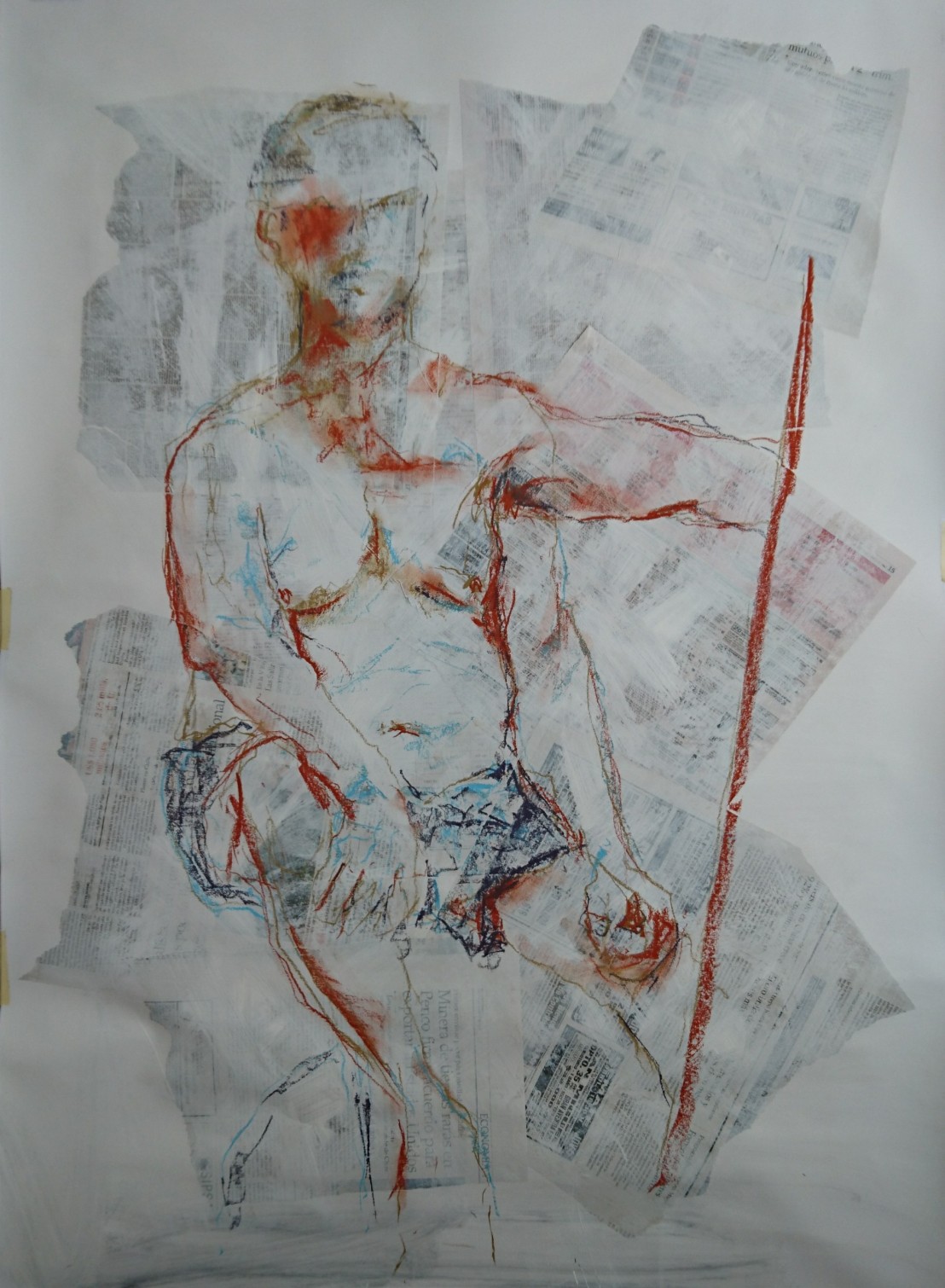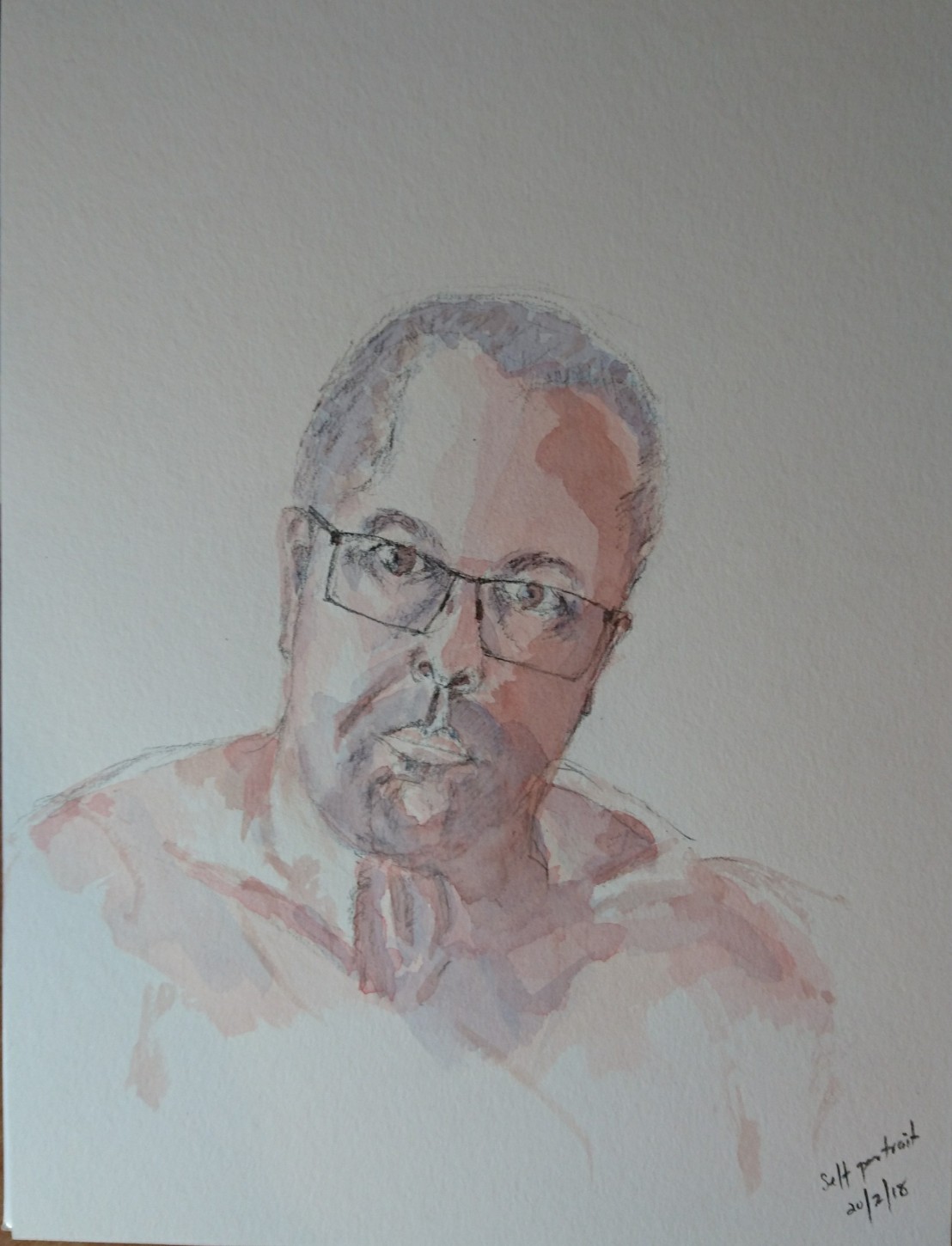Assignment 4
1. Figure study using line – Seated model in an upright chair
Upon starting this course I was worried about working big, however now I find it liberating and comfortable working bigger – this drawing was a little bigger than A1. The paper (in spanish) was called Pergamina – a textured vinyl type paper which creates a misty effect when used with charcoal. In this drawing I used coloured pencil and charcoal.

This drawing was based on an earlier sketch I made of myself – also made in front of a very large mirror hung in my study/studio. I had huge difficulties with my left leg and had to redraw it many times. I drew my right arm in two positions as I had to keep it moving to draw!
Of course the whole image is reversed by the mirror.
I was not entirely pleased with this drawing because of the amount of reworking and also because I re-read the assignment brief which asked to rediscover new ways to work with line – so I used experimental work that I made previously in the figure exercises in oil pastel and also an effect I encountered in Part 3 with pastel on newsprint previously painted over with acrylic gesso – the effect was almost like a fresco.
On this occasion I used a limited palette of soft pastels on newsprint pre-prepared – painted over with white acrylic gesso:


Whilst there are some inaccuracies in the scale and measurements of this study, my line work was fresher and I used a wide variety of colour, weight and style. I have managed to achieve an accurate rendering of my limbs and hands – including some skeletal landmarks. I was much happier in this study than the first.
2. Figure study using tone – Reclining model
During this course and Part 4, I have been referring to an interesting book on drawing by Paul Thomas and Anita Taylor:
The charcoal drawing on the right was actually made by addition (not subtraction) but I also referred to a part of Experimental Drawing in which a drawing was made by the subtraction of charcoal. In the following drawing I wanted to achieve a similar effect to the RH drawing above but by subtraction. I therefore prepared the pergamina support the night before with a direct coating of compressed charcoal.
This then gave me a basis upon which I could achieve a figure study using tone. Highlights were taken out using a rubber and darker shadows by adding charcoal.
The pergamina support was not ideal for this medium but did allow for better subtraction of the charcoal.
Lighting was artificial and from a single source – in the evening without daylight.
There was also influence from studies made by Frank Auerbach – see self-portrait notes below for final drawing.

This is perhaps a style I could develop further and it did work well. There are inaccuracies in the proportions, however I felt that the modelling using tone was good and model well placed within the sofa.
3. A portrait or self portrait combining line and tone
This final drawing is in fact an atmostpheric self-portrait using a single light source as called for in the brief. The influence was from the portraits and self-portraits made by Frank Auerbach:
Combining this with his looser line drawing portraits:

Before making my final drawing, I made some other Frank Auerbach style studies in my sketchbook:

Also some other sketches – the RH one blind:

Finally, I returned to a study by Frank Auerbach called ‘Head of Bruce Bernard’ – I made the following copy before embarking on my final drawing for Part 4:

For this drawing I chose the wonderful Strathmore charcoal drawing paper that I had used before with compressed charcoal to ensure that I could achieve a wide tonal contrast combined with expressive line. The drawing was made up of several layers built up, erased and then built up again until finally I had a sufficient level of texture, interesting background and basis upon which to finalise highlights and expressive line.
Final drawing:

































